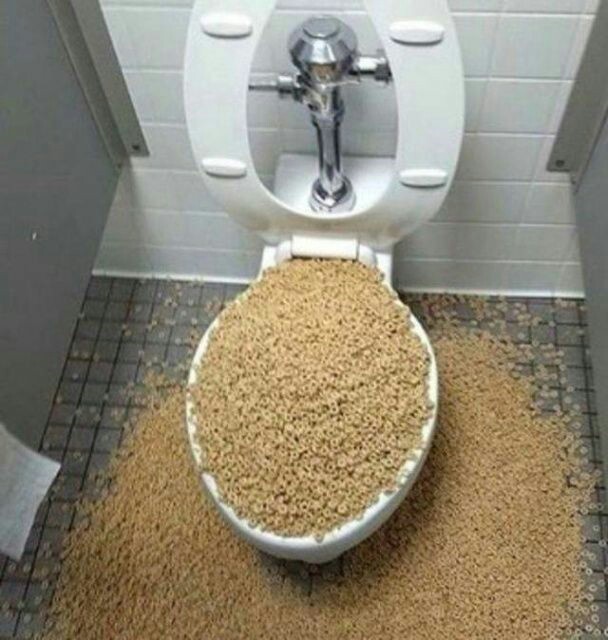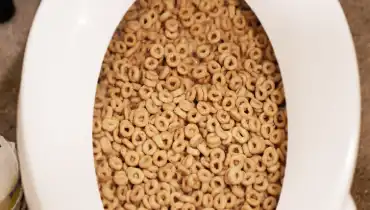Is it Rational to Dispose of Food in the Toilet?
Is it Rational to Dispose of Food in the Toilet?
Blog Article
Everyone will have their own conception when it comes to Is it safe to flush food (especially rice) down the toilet?.

Introduction
Lots of people are often faced with the predicament of what to do with food waste, especially when it concerns leftovers or scraps. One usual question that occurs is whether it's all right to flush food down the toilet. In this post, we'll explore the reasons that people could consider flushing food, the repercussions of doing so, and alternative approaches for proper disposal.
Reasons why people may take into consideration flushing food
Absence of understanding
Some people might not recognize the possible injury brought on by flushing food down the commode. They may erroneously believe that it's a harmless practice.
Ease
Flushing food down the bathroom may look like a fast and simple service to disposing of unwanted scraps, particularly when there's no close-by garbage can offered.
Negligence
Sometimes, people may just pick to flush food out of sheer laziness, without thinking about the effects of their actions.
Consequences of flushing food down the bathroom
Ecological effect
Food waste that winds up in waterways can contribute to pollution and harm aquatic environments. Furthermore, the water utilized to purge food can stress water resources.
Plumbing concerns
Purging food can cause clogged pipelines and drains pipes, triggering costly pipes repair services and troubles.
Kinds of food that ought to not be flushed
Coarse foods
Foods with coarse textures such as celery or corn husks can obtain tangled in pipes and trigger clogs.
Starchy foods
Starchy foods like pasta and rice can soak up water and swell, causing clogs in pipes.
Oils and fats
Greasy foods like bacon or food preparation oils should never ever be flushed down the toilet as they can strengthen and create blockages.
Proper disposal methods for food waste
Making use of a garbage disposal
For homes geared up with waste disposal unit, food scraps can be ground up and purged through the plumbing system. Nonetheless, not all foods are suitable for disposal in this manner.
Recycling
Certain food product packaging products can be reused, minimizing waste and reducing environmental influence.
Composting
Composting is a green method to take care of food waste. Organic materials can be composted and used to enhance soil for horticulture.
The importance of correct waste management
Minimizing environmental damage
Correct waste administration techniques, such as composting and recycling, help lessen pollution and preserve natural deposits for future generations.
Protecting plumbing systems
By preventing the technique of flushing food down the commode, homeowners can avoid expensive pipes fixings and preserve the stability of their plumbing systems.
Final thought
Finally, while it might be alluring to purge food down the commode for ease, it's important to comprehend the prospective repercussions of this action. By taking on correct waste monitoring methods and disposing of food waste sensibly, people can contribute to healthier pipes systems and a cleaner setting for all.
FLUSH FOOD DOWN THE TOILET?
FLUSHING FOOD CAN CAUSE BLOCKED DRAINS IN YOUR HOME
All of the plumbing fixtures in your home are connected to the same sewer pipe outside of your home. This outdoor sewer pipe is responsible for transporting all the wastewater from your home to the Council sewer mains. Even small pieces of food that go down the kitchen sink can cause problems for your sewer. It should therefore be obvious that flushing larger bits of food, such as meat, risks a clog in either the toilet itself or the sewer pipes. Flushing greasy food is even more problematic because oil coagulates when it cools, coating the interior lining of your pipes.
THE TOILET IS NOT A BIN
Food isn’t the only thing that people shouldn’t be flushing down the toilet. People use the toilet to dispose of all kinds of things such as tampons, makeup wipes, dental floss, kitty litter and even underwear. Water goes to great lengths to educate residents about the high costs and stress placed on wastewater treatment systems simply from people flushing the wrong stuff down the toilet. It costs taxpayers millions of dollars each year, and homeowners thousands in blocked drain repairs.
FLUSHING FOOD IS A WASTE OF WATER
Flushing food is a waste of our most precious resource - water. In June this year Level 1 water restrictions were introduced to protect water supply from drought conditions. Much of New South Wales continues to be affected by prolonged drought with recent figures revealing up to 97 per cent of the state remains in drought. Depending on whether you have a single or dual flush toilet, every single flush uses between five and 11 litres of water. In the current climate this is a huge amount of water to be wasting on flushing food that should be placed in the bin (or better yet, the compost).
https://www.jabplumbingsolutions.com.au/blog/can-you-flush-food-down-the-toilet

I ran across that piece on when doing a lookup on the search engines. Make sure you take a moment to promote this page if you liked it. Many thanks for your time. Don't forget to pay a visit to our blog back soon.
Click Here Report this page